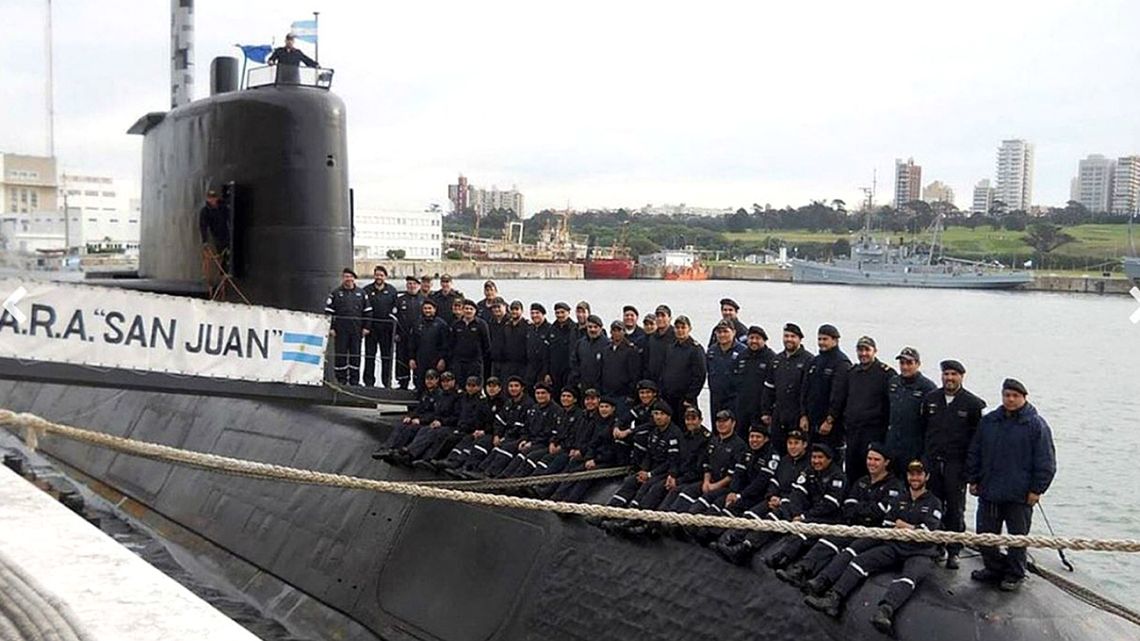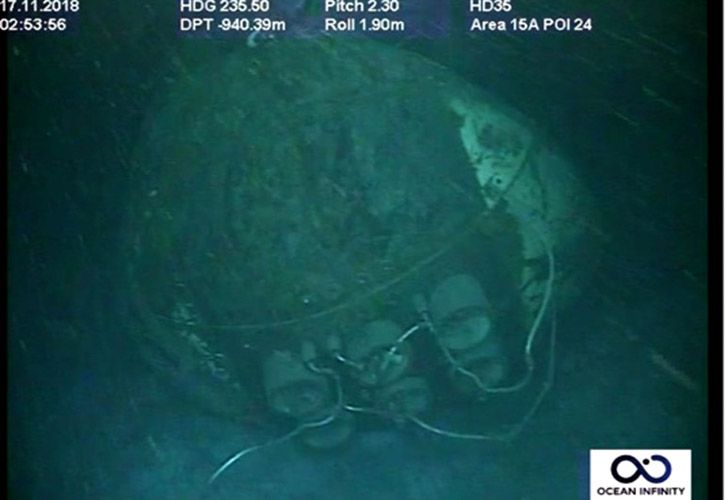Netflix has dropped the trailer for its latest documentary, “ARA San Juan: The Submarine that Disappeared,” shedding light on one of Argentina’s most tragic maritime disasters.
A Netflix documentary will explore the ill-fated voyage of the diesel-electric submarine ARA San Juan, which vanished without a trace on November 15, 2017, along with its entire crew of 44 sailors.
The documentary promises to unravel the enigmatic circumstances surrounding the disappearance of the ARA San Juan, providing insights into the events preceding that pivotal day and the extensive search and rescue efforts that followed.
The description accompanying the released YouTube video states, “On November 15th, 2017, Argentine naval submarine ARA San Juan disappeared from all radars with its 44 crew members on board. The search paralyzed the country while relatives waited for a miracle and relentlessly asked for their beloved. What happened?”
The description further mentions that the documentary series “ARA San Juan: The Submarine That Disappeared” will exclusively premiere worldwide on Netflix on March 7.
At the 0.25-second mark, the trailer delivers a powerful statement that encapsulates the gravity of the situation the country was confronting at that time: “There has never been a situation like this in Latin America.”
As the video progresses, it takes viewers on a journey through the scenes of rescue operations that ensued after the incident, offering a poignant glimpse into the emotional turmoil experienced by affected families. It also delves into the complex dynamics of blame and accountability surrounding the incident.
According to Netflix, this investigative docuseries is fueled by interviews with experts and relatives, providing an in-depth exploration of the tragic 2017 disappearance of a military submarine that sent shockwaves across the world.
The series will consist of eight half-hour chapters, which will feature archival footage, exclusive images, and unpublished testimonies. It reconstructs a complex web of negligence, cover-ups, irregularities, and hidden interests around this tragic event.
Directed by Mauricio Albornoz Iniesta and produced by Cactus Cine and Marcos Sacchetti, the documentary will delve into the different theories surrounding the disappearance.
Producers of the documentary said, “We were motivated by the need to clarify the various hypotheses surrounding the disappearance of the ARA San Juan submarine. This documentary series seeks to honor the memory of the 44 deceased crew members and the struggle of their families, who tirelessly persevere in the search for answers.”
The Disappearance Of ARA San Juan
The ARA San Juan (S-42), a TR-1700-class diesel-electric submarine, served in the Argentine Navy from 1985 to 2017. It was constructed in West Germany and commissioned on November 19, 1985, undergoing a mid-life upgrade from 2007 to 2014.
On November 15, 2017, the San Juan vanished with its 44 crew members during a routine patrol in the South Atlantic off Argentina’s coast. The last communication from the submarine occurred at 0719 (local time) on the same day, reporting a mechanical issue with its batteries.

The crew indicated they were rerouting the submarine from the southern Atlantic to its home base in Mar del Plata, where most crew members resided. However, no distress call was issued, and it remained unclear if the issue left the vessel without propulsion or unable to surface.
Following established protocol, an extensive radio search in all frequencies was conducted. On November 16, the Navy declared the submarine missing, triggering a search-and-rescue (SAR) operation.
The ARA La Argentina, a MEKO-360–class frigate carrying a helicopter, was deployed, along with other Argentine Navy aircraft. Later, international assistance involving 19 countries, over 4,000 individuals, 28 surface ships, and nine aircraft was mobilized.

Despite adverse weather conditions, efforts continued with support from the Argentine Navy, Air Force, Coast Guard, and the Argentine Army. Specialized assistance, including a U.S. Navy P-3 Orion and the Russian Navy’s research vessel Yantar, was also deployed.
The SAR operation covered more than 550,000 square nautical miles in the challenging South Atlantic waters, but no trace of the submarine was found.
On November 22, the Comprehensive Nuclear Test Ban Treaty Organization reported an unusual hydroacoustic signal near the submarine’s last-known position, providing valuable data for ongoing operations.
The US Navy Undersea Rescue Command, Norwegian-flagged ships, and the Russian Navy’s Yantar contributed to the SAR efforts. However, despite the extensive international assistance, all efforts ultimately proved unsuccessful.
What Happened to the Submarine?
With international support waning, the Argentine Navy contracted Ocean Infinity, a company specializing in seabed exploration, in September 2018.
This company hired the services of the OSS Seabed Constructor, which was equipped with five autonomous underwater vehicles and two additional remotely operated devices.
Over 62 days, an extensive search covered more than 8,000 square nautical miles, leading to the analysis of 24 new contacts.
On November 17, one year and two days after the San Juan went missing, the wreckage was found close to the hydroacoustic anomaly at a depth of approximately 900 meters.
The initial images revealed the imploded pressure hull, with the bow section, sail, and propellers scattered across a small area. The identification process involved the utilization of a Seabed Constructor’s remotely operated vehicle (ROV).

The then-President of Argentina declared a national day of mourning on the following day to honor the 44 crewmembers of the San Juan.
Following the investigation, the Argentine Navy concluded that the ARA San Juan sank due to an implosion. The service stated that the submarine was in good condition when it departed from the Argentinian city of Ushuaia in 2017. However, it began taking on water, leading to short-circuiting and smoke.
It is believed that a fire broke out aboard the submarine near the forward electric batteries on November 14, 2017 — a day before the incident. Subsequently, water is thought to have entered the batteries through the ventilation system, resulting in a subsequent fire and explosion.
This led to the crew losing control of the vessel, causing it to begin its descent. Upon reaching a critical depth, experts suggest that the submarine was crushed by a water column, serving as the primary cause of the wreckage.
- Contact the author at ashishmichel(at)gmail.com
- Follow EurAsian Times on Google News




